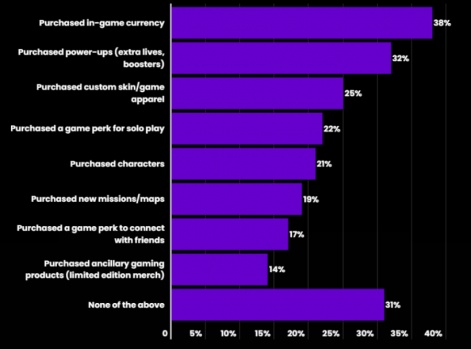Analysis Reveals Surprising Differences in Gamer Motivations
An analysis conducted by Tinuiti, a prominent research firm, has revealed intriguing insights into the motivations of gamers across different generations. The study showcases a significant disparity between Generation Z (Gen Z) and baby boomers in their approach to gaming.
Relaxation and Unwinding Take the Lead
With 42% overall, relaxation and unwinding emerge as the most popular primary motivation for gamers. However, when broken down by generation, the results vary. Among baby boomers, 51% consider relaxation as their primary driver, while only 31% of Gen Z gamers share the same sentiment.
On the other hand, 34% of gamers prioritize gaming for its entertainment value. The difference between generations is less noticeable in this aspect, with 35% of Gen Z and 32% of baby boomers acknowledging entertainment as their primary motivation. This suggests that Gen Z gamers are more likely to enjoy competitive games that offer less relaxation than their baby boomer counterparts.
Interestingly, while only 11% of Gen Z and baby boomer gamers claim to be primarily motivated by winning, Gen Z users show a higher inclination toward gaming for social reasons. Specifically, 12% of Gen Z gamers believe gaming is an excellent way to keep up with friends, compared to just 3% of baby boomers. Moreover, 8% of Gen Z gamers consider gaming a good way to meet people, compared to 3% of baby boomers. These findings indicate that Gen Z gamers are more inclined to participate in social and competitive gaming experiences.
Overall, 44% of gamers feel more competitive in the gaming world, while only 12% consider themselves less competitive.
Mobile Gaming Triumphs as the Most Prevalent Platform
Among all gaming platforms, mobile games reign supreme, capturing the attention of 78% of gamers. The mobile platform is particularly popular among Gen Z and Generation X (Gen X), with 80% of gamers from both categories indulging in mobile gaming. Millennials closely follow, with 78% engaging in mobile gaming, and baby boomers are not far behind at 75%.
However, it is worth noting that one other category surpasses the 60% mark, with 65% of Gen Z respondents enjoying PC gaming. Additionally, Tinuiti separates the three most popular consoles into their own category, with PlayStation emerging as the top choice.

In terms of primary gaming platforms, younger generations are less likely to prioritize mobile gaming. While 44% of all users consider themselves primarily mobile gamers, the popularity decreases significantly among different age groups. Baby boomers and Gen Xers top the list with 57% and 52% listing mobile as their primary platform, respectively. In contrast, only 37% of millennials and 29% of Gen Z gamers place mobile gaming at the forefront.
Conversely, PC gamers capture the preference of 21% of all gamers, garnering the most attention from baby boomers (31%) and Gen Z (29%). However, it is essential to mention that the console category is divided into three distinct segments.
Mobile gaming is also more likely to attract casual gamers. Among all platforms, mobile is the only category where more players report playing for less than an hour (58%) than those playing for over 10 hours (40%). This suggests that PC and console gamers are more devoted, investing significant amounts of free time into their gaming experiences. While mobile gaming still retains more dedicated players than all three consoles combined, its popularity seems to stem from its accessibility and broad appeal compared to other platforms.
The Power of Marketing in the Gaming Industry
Gaming provides diverse opportunities for monetization, allowing brands to grow their influence among gamers.
A staggering 69% of gamers admit to making at least one in-game purchase, whether that involves currency, DLC, or cosmetic items. In addition, 17% of respondents have purchased games to play with friends, while 14% have bought related merchandise.

Although in-game purchases are prevalent in mobile games, with features like energy or power-ups, mobile games lag behind in terms of the overall share of in-game purchases. Only 58% of respondents who play mobile games indulge in in-game purchases. In contrast, a combined 86% of console players have made in-game purchases, with the Nintendo Switch leading the pack at 90%. This discrepancy may be attributed, in part, to the immense popularity of Nintendo franchises like Pokemon and The Legend of Zelda. Many fans are willing to invest in high-ticket items such as DLC. Tinuiti suggests that the more casual player base of mobile games contributes to lower rates of in-game purchases compared to other gaming platforms.
When asked about preferred forms of gaming-related marketing, gamers expressed a strong preference for brand-sponsored add-ons available for free, with 34% considering it their top choice. This was followed by gaming content, such as series and articles produced by brands (24%), and intrinsic in-game advertising like banners and in-game billboards (16%).
These preferences indicate that players are receptive to game-related marketing techniques, but they greatly favor methods that either enhance the gaming experience or do not disrupt gameplay. Notably, in the last year, 39% of respondents admitted to purchasing a product they discovered through in-game marketing.
Tinuiti highlights the potential of rewarded video ads, as they offer a valuable exchange without detracting from the gameplay.